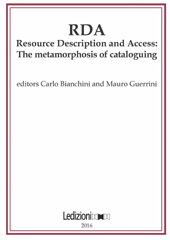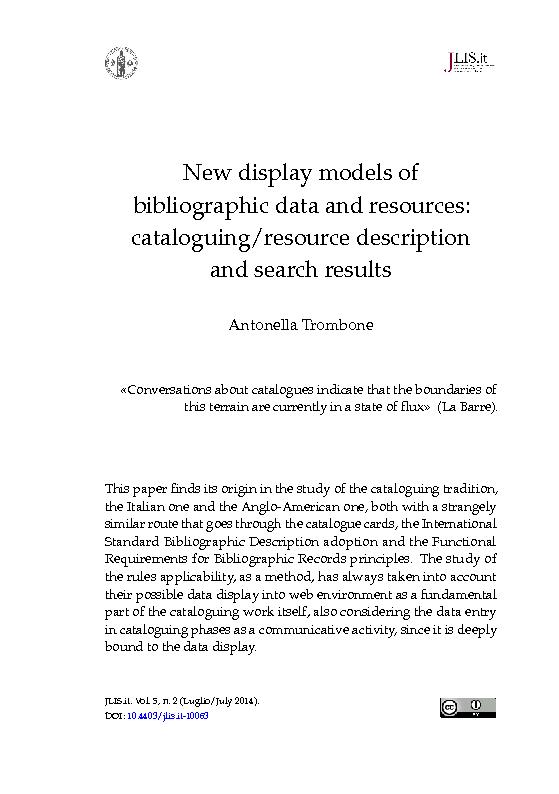New displaying models of bibliographic data and resources : cataloguing/resource description and search results
19-32 p.
The logical model outlined in Functional Requirements for Bibliographic Records in 1998 has led to a theoretical reflection on the function of data and their organization into catalogues that hasn't found stable effects in the representation of information yet. A consequence of the wide theoretical resonance of FRBR report was the review of regulatory codes and standards for electronic recording of bibliographic data. The first code that partly implements the FRBR model is the Italian one, published in 2009, the Italian cataloguing Rules: REICAT. The revision the Anglo-American cataloging rules has resulted in a new tool, based on the FRBR model and not set as a cataloging code: RDA. Resource Description and Access, released in 2010. To changing patterns of information models and contents' media it has to add new information environment available to users, accustomed to using search engines as information retrieval tools, powerful and generalist.
Today's electronic catalogs are based on MARC formats for encoding of information, aimed at sharing and exchanging bibliographic records. However, the library data encoded in MARC exchange formats are invisible to search engines. Gradually, over the last few years, software modules devoted to cataloging have been differentiated from those for consultation, data visualization interfaces dedicated to users aimed to simplify the search mechanisms. One of the open issues relating to the new display systems concerns the selection and presentation of data. The sorting order is based on the criteria of relevance, which is based on scores that a software assigns to the record in relation to the weight or importance of the words entered in the search string.
The new display systems of users ' searches, the discovery platforms that simultaneously query heterogeneous data bases for content and location, including also the OPACs, no longer use the languages of librarianship. The final display of search results does not conform to librarians' models, judged commercially unclear for end-users, now accustomed to the seeming simplicity of the search engines. The risk , both at scientific and at professional level, is to lose the opportunity to propose not only a model for description of resources, but also a model for displaying data, the structural representation of entities based on the FRBR model, or RDA or REICAT principles. The paper here proposed analyzes different patterns of bibliographic data visualization that libraries' OPACs and library service platforms begin to offer, focusing on three categories of innovations in displaying of cataloguing data:.
the data proposed by discovery tools or library service platforms, that transform and integrate information taken from the Integrated Library Systems with other collections accessible through libraries;the data derived from the cataloguing based on RDA started in some libraries; the displays of bibliographic data emulating the hierarchical organization among entities foreseen by FRBR. [Publisher's Text].
-
Articles from the same issue (available individually)
-
Information
ISSN: 2038-1026
KEYWORDS
- Bibliographic data visualization, OPAC, discovery platforms



